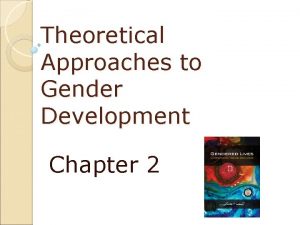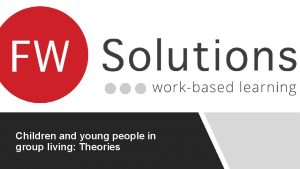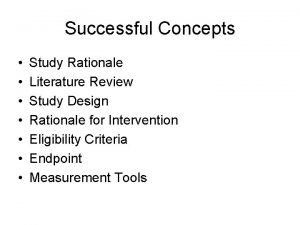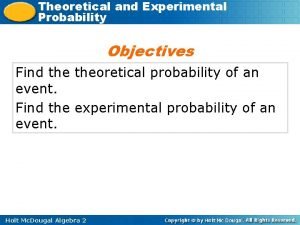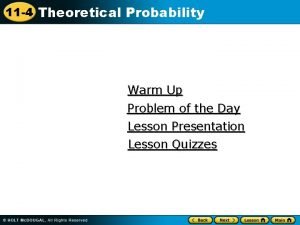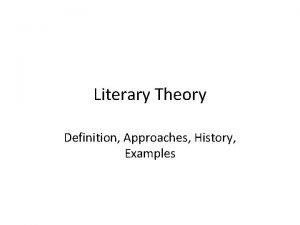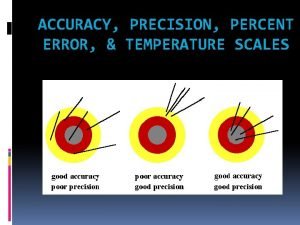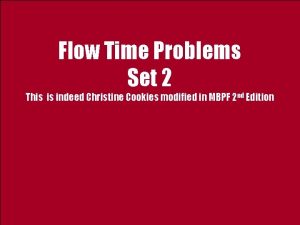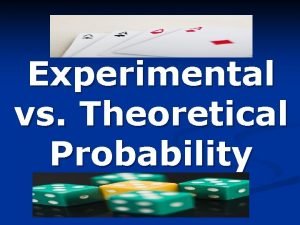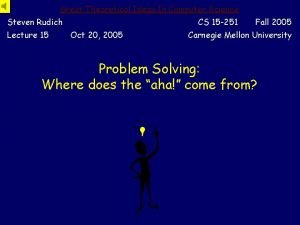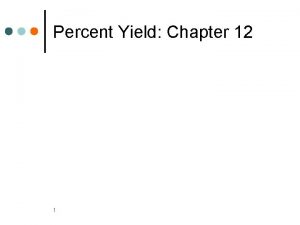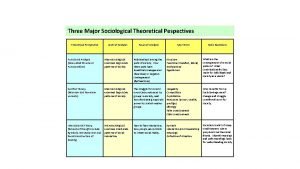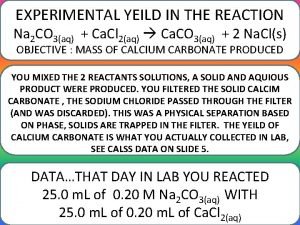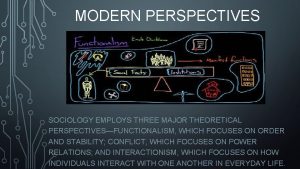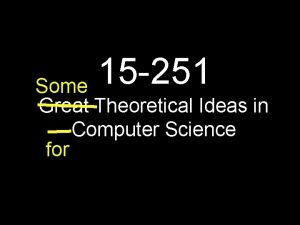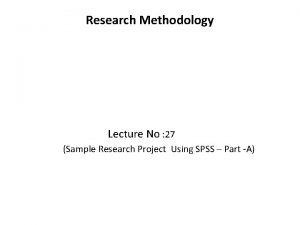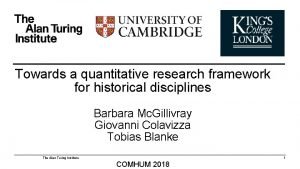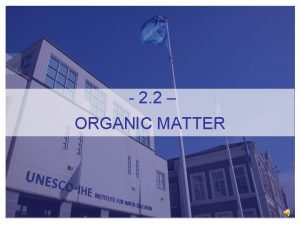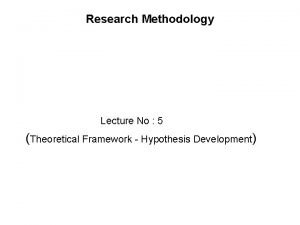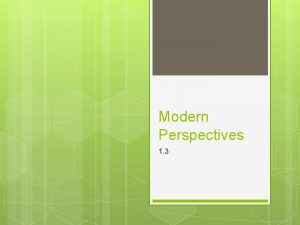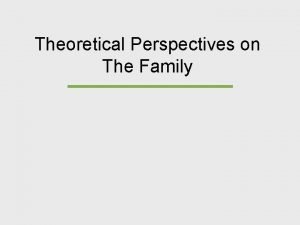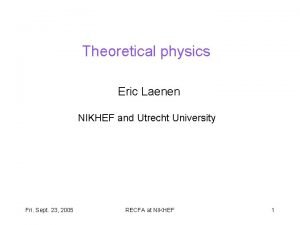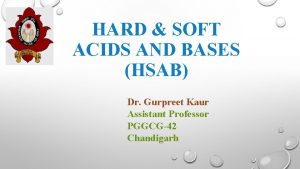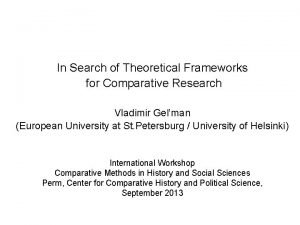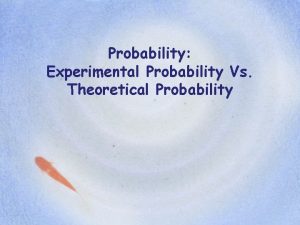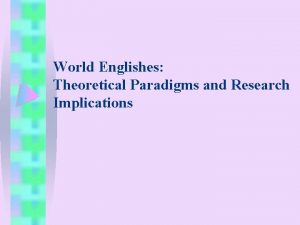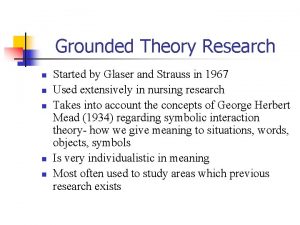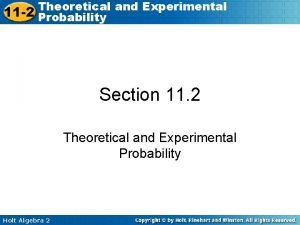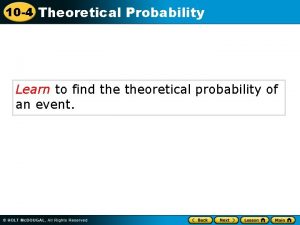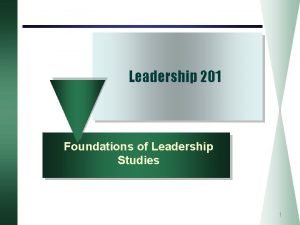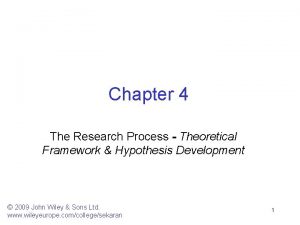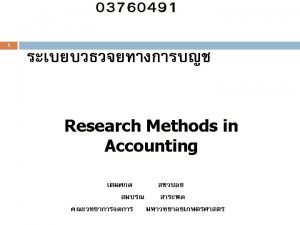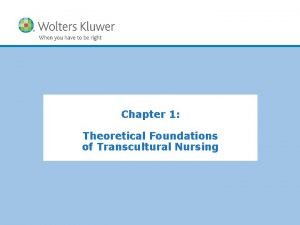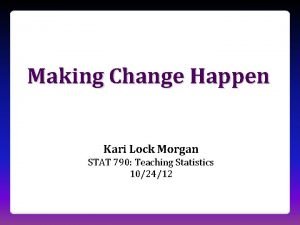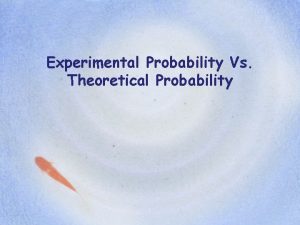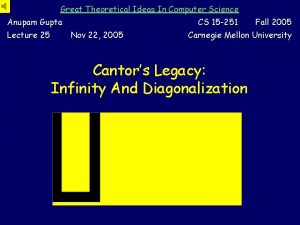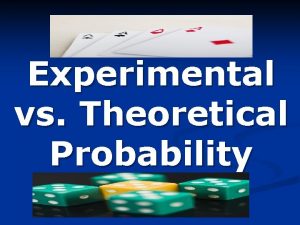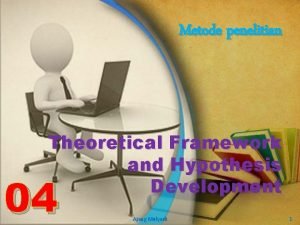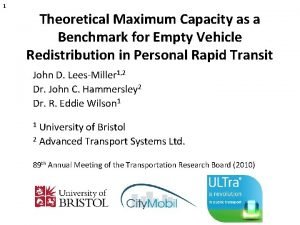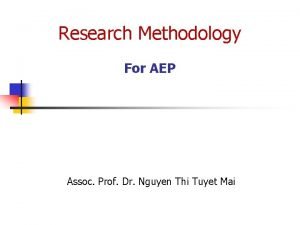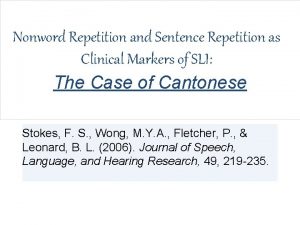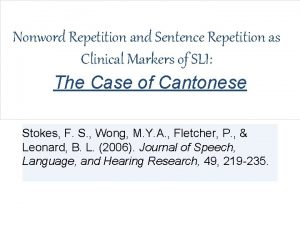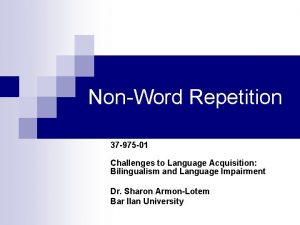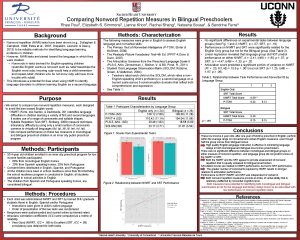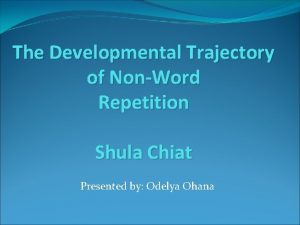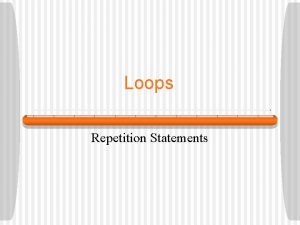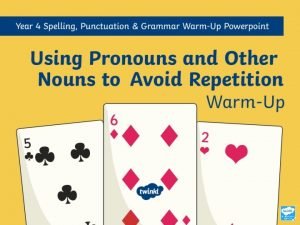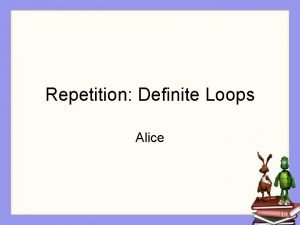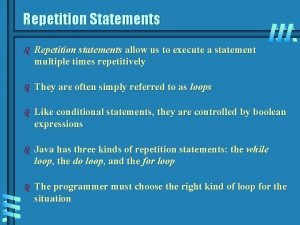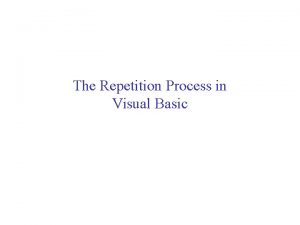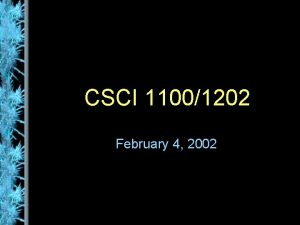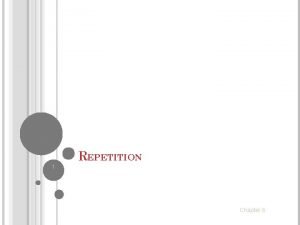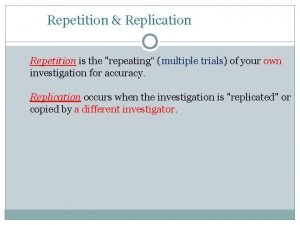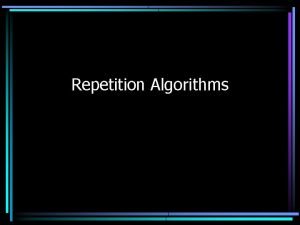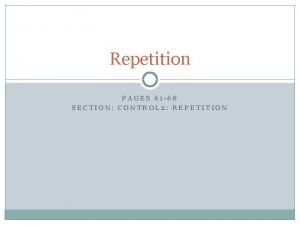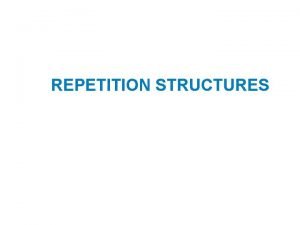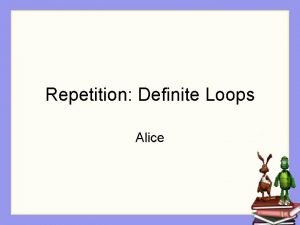NonWord Repetition 37 924 01 Theoretical Approaches to




















































- Slides: 52

Non-Word Repetition 37 -924 -01 Theoretical Approaches to Specific Language Impairment (SLI) Dr. Sharon Armon-Lotem Bar Ilan University

What is a Non-Word Repetition task? In a non-word repetition task the child in asked to repeat pseudo words and/or nonwords of 1 -5 syllables, with or without a cluster at the onset, middle or coda. Pseudo word: target-like Non-word: not target-like

GAPS - Grammar and Phonology Screening Test Gardner, H. , Froud, K. , Mc. Clelland, A. & van der Lely, H. (2006) The development of the Grammar and Phonology Screening (GAPS) test to assess key markers of specific language difficulties in young children. International Journal of Language & Communication Disorders dep, pif, dremp, klest, tobilf, difimp, bademper, fakester, padrepper, difrimple n n What contributes to the complexity of these words? Are they English like? Could they be used as is in a Hebrew test? Which considerations should apply?

The processing involved in NWR n n n NW >> Auditory processing >> Phonological Analysis >> Phonological storage (and learning for real words) >> Speech motor planning >> Output These can be influenced by: n n n n Hearing loss Phonotactic frequency Language dominance Stimulus length STM deficit Complexity Articulatory deficit

What is NWR testing then? n Baddeley, A. D. (2003). Working memory and language: An overview. Journal of Communication Disorders, 36, 189– 208. ANNA 13/12

Phonological working memory (phonological loop) “Working memory (WM) according to Baddeley (1986) is a multicomponent, capacity-limited system that comprises a controlling ‘‘central executive’’ and that includes an articulatory loop system. The central executive. . . is thought to regulate information flow within WM, retrieval of information from other memory systems, and the processing and storage of information. The articulatory loop … includes a capacity-limited phonological short-term store and an articulatory control process … that acts to refresh and maintain speech material in the store for a brief period. The articulatory loop’s function is to store verbal input temporarily, especially novel phonological input (Baddeley, Gathercole, & Papagno, 1998), while other cognitive tasks such as auditory comprehension take place. The ability to temporarily store novel material also allows the listener the opportunity to create long-term phonological representations of that material (Baddeley et al 1998). ” (Montgomery 2003, p. 222)

Digit Span Gray, S. 2003. Diagnostic accuracy and test-retest reliability of nonword repetition and digit span tasks administered to preschool children with specific language impairment. Journal of Communication disorders 36, 129 -151

Linguistic Knowledge n Knowledge of lexical composition ¨ Size of vocabulary ¨ Abstract representation / Poor representational system ¨ Less efficient mechanism for using lexical knowledge n Speech output

Non-word repetition & word learning – TLD, L 1 At the age of 4 (Gathercole, Service, Hitch, Adams and Martin 1999)

At the age of 5 & 13 (Gathercole, Service, Hitch, Adams and Martin 1999)

L 2 Acquisition (Masoura and Gathercole 1999)


n Success on NWR reflects vocabulary size in childhood n Success on NWR correlates with the rate of learning new words even to adulthood

n Chiat, S. (2006). The developmental trajectory of nonword repetition. Applied Psycholinguistics, 27, 552 -556. ODELYA 13/12

NWR & SLI

NRT - Nonword Repetition Test Dollaghan, C. , and Campbell, T. F. 1998. Nonword Repetition and Child Language Impairment. Journal of Speech, Language, and Hearing Research Vol. 41 1136 -1146

n n What contributes to the complexity of these words? Are they English like? Could they be used as is in a Hebrew test? Which considerations should apply?

CNRep - Children's Test of Nonword Repetition Gathercole, S. E. , Willis, C. S. , Baddeley, A. D. , and H. Emslie H. (1994) The Children's Test of Nonword Repetition: a test of phonological working memory. Memory 2(2): 103 -27. (Tables from Archibald, L. M. D. , & Gathercole, S. (2006))



How are they different?

Archibald, L. M. D. , & Gathercole, S. (2006). Nonword repetition: A Journal of Speech, Language, and Hearing . comparison of tests . Research, 49, 970– 983 n n Subjects: 36 native speakers: 12 SLI (9; 8), 12 TD age (9; 9), 12 TD language (6; 1). Same SES Scores on standardized test:

Which one is easier?

Within group: CNRep is easier than NRT n Across group: The gap is more significant on CNRep n

What influences these results?

How does NWR fairs with other tasks? Conti-Ramsden, G. (2003). Processing and linguistic markers in young children with specific language impairment (SLI). Journal of Speech, Language, and Hearing Research, 46, 1029– 1037.


Children with SLI are significantly worse on all four markers n NWR and past tense marking yield the best results (sensitivity & specificity). n Adding past tense to NWR raises the predictive ability (from 81% to 87%) n While verb morphology is useful for 4 -5 y. o. in English, NWR might be more promising for other languages n

Sentence Repetition 37 -924 -01 Theoretical Approaches to Specific Language Impairment (SLI) Dr. Sharon Armon-Lotem Bar Ilan University

Child: Want other one spoon, Daddy 2. Father: You mean, you want THE OTHER SPOON 3. Child: Yes, I want other one spoon, please. 4. Father: Can you say “the other spoon”? 5. Child: Other … one … spoon. 6. Father: Say … “other”. 7. Child: Other. 8. Father: “Spoon”. 9. Child: Spoon. 10. Father: “Other … spoon. ” 11. Child: Other … Spoon. Now give me other one spoon? 12. (From Pinker 1994, p. 281) 1.

Elicited imitation as an experimental technique Filling the gap n Word order (e. g. in relative clauses) n

Filling the gap (Slobin & Welsh 1973, from Lust et al. p. 58) Adult: The red beads and the brown beads are here Child: Brown beads here and red beads here


Sentence repetition as a linguistic evaluation tool How does SR work? (Bley-Vroman and Chaudron, 1994): ¨ The subject hears the input, processes it, and forms a representation. ¨ The representation includes information at various levels. ¨ The representation is kept in STM ¨ The subject formulates (and produces) a sentence based on the representation, comparing it to the model.

What influences success on SR? What does it check? ¨ Verbal memory ¨ Word length ¨ Sentence length ¨ Syntactic complexity ¨ Predictability

Verbal memory span n Devesovi, A. & Caselli, M. C. 2007. Sentence repetition as a measure of early grammatical development in Italian. International Journal of Language and Communication Disorders, 42, 2 187 -208. Subjects: 100 Italian preschoolers. Method: SR, spontaneous speech, verbal memory span Findings: MLU, articles omission and use of the verbs in the sentence imitation task correlated with the same measures of their free speech. ¨ Positive correlations between verbal memory span and performance of both the imitation task and the free speech. ¨

Word length Willis, C. S. & Gathercole, S. E. (2001). Phonological short-term memory contributions to sentence processing in young children. Memory, 349 -363. , 9

n n Subjects: 30 children, 4 -5 (Mean 4; 6, SD, 4. 28 months) Material: SR followed by picture selection with sentences containing either short or longer words (different in number of syllables), and varied in syntactic structure.

Repetition but not comprehension of the sentences was significantly influenced by word length.

Sentence length (Armon-Lotem et al. under revisions) n n Substitution with code interference: The baby laughed on the clown. Substitution with no code interference: The baby laughed to the clown. Omission with code interference: The elephant pulled *(down) the zebra's pants. Omission with no code interference: The baby laughed *(at) the clown.

Syntactic complexity Friedmann, N. , & Lavi, H. (2006). On the order of acquisition of A-movement, Wh-movement and V -C movement. In A. Belletti, E. Bennati, C. Chesi, E. Di Domenico, & I. Ferrari (Eds. ), Language acquisition and development (pp. 211 -217). Newcastle, UK: Cambridge Scholars Press/CSP.

n n Subjects: 60 Hebrew speaking children aged 2; 2 -3; 10: 21 children aged 2; 2 -2; 9, 19 children aged 2; 10 -3; 2, and 20 children aged 3; 3 -3; 10. Task: SR - 80 sentences (8 categories by syntactic complexity), 4 words.

"No correlation was found between repetition of any of the movement types and age (Rpb < 0. 22 for all the sentences with movement), and no significant difference in repetition was detected between the three age groups: For example, a 2; 3 year old girl succeeded in repeating all the V-C sentences, whereas a 3; 10 boy failed in them. Two girls aged 2; 5 succeeded in repeating Wh sentences, whereas 4 children aged 3; 7 failed in them. " (p. 214)


Predictability Valian, V. Prasada, S. & Scarpa, J. 2006. Direct object predictability: effects on young children's imitation of sentences. Journal of Child Language, 33, 247 -269. n Predictability- It is easier to repeat sentences with highly predictable objects than sentences with less predictable objects. a. The dog chews a bone. b. The dog chews a crayon n Subjects: 24/23 two-year-olds (mean 28 month, range 25 -32) with TLD n Task 1: Sentence repetition 6 -8 morphemes. Task 2: Sentence repetition 6 -8 morphemes + a stickers game n



SR & SLI Gardner, H. , Froud, K. , Mc. Clelland, A. , van der Lely, H. K. J. (2006). The development of the Grammar and Phonology Screening (GAPS) test to assess key markers of specific language difficulties in young children. International Journal of Language and Communication Disorders 41(5), 513 -540.


A significant effect of age group: F(4, 618)547. 53, p, 0. 001


 Rd 924
Rd 924 Theoretical approaches to gender development
Theoretical approaches to gender development Summarise theories about group living
Summarise theories about group living Examples of testimonial propaganda
Examples of testimonial propaganda Theoretical framework
Theoretical framework Theoretical probability
Theoretical probability Example of theoretical probability
Example of theoretical probability Mimetic literary criticism example
Mimetic literary criticism example Temperature conversion formulas
Temperature conversion formulas Theoretical flow time for alternative paths
Theoretical flow time for alternative paths Simple event
Simple event How to compute theoretical probability
How to compute theoretical probability Vocabularize
Vocabularize Theoretical yeild
Theoretical yeild Three theoretical perspectives in sociology
Three theoretical perspectives in sociology Experimental yeild
Experimental yeild Three major theoretical perspectives in sociology
Three major theoretical perspectives in sociology Great theoretical ideas in computer science
Great theoretical ideas in computer science Project proposal methodology sample
Project proposal methodology sample Theoretical paradigm example
Theoretical paradigm example Theoretical analysis of culture
Theoretical analysis of culture Theoretical yield stoichiometry
Theoretical yield stoichiometry Example of working framework in research plan
Example of working framework in research plan Diederik rousseau
Diederik rousseau Plate theory chromatography
Plate theory chromatography Conceptual framework theoretical framework
Conceptual framework theoretical framework Theoretical framework example
Theoretical framework example Theoretical framework and hypothesis development
Theoretical framework and hypothesis development Three theoretical perspectives
Three theoretical perspectives Theoretical perspectives on the family
Theoretical perspectives on the family Eric laenen
Eric laenen Limitations of hsab principle
Limitations of hsab principle Theoretical framework for comparative study
Theoretical framework for comparative study Theoretical lens in research example
Theoretical lens in research example Comparing experimental and theoretical probability
Comparing experimental and theoretical probability World english paradigm
World english paradigm Theoretical sampling
Theoretical sampling Poisson distribution formula
Poisson distribution formula 11-2 probability
11-2 probability How to find theoretical probability
How to find theoretical probability Theoretical foundation of leadership
Theoretical foundation of leadership Framework hypothesis
Framework hypothesis List of theoretical frameworks
List of theoretical frameworks Theoretical foundations of transcultural nursing
Theoretical foundations of transcultural nursing Statkey theoretical distribution
Statkey theoretical distribution Theoretical probability vs experimental probability
Theoretical probability vs experimental probability Great theoretical ideas in computer science
Great theoretical ideas in computer science Theoretical ex-rights price
Theoretical ex-rights price Theoretical yield
Theoretical yield Experimental vs theoretical probability
Experimental vs theoretical probability Contoh theoretical framework
Contoh theoretical framework Theoretical maximum capacity
Theoretical maximum capacity Theoretical framework example
Theoretical framework example

